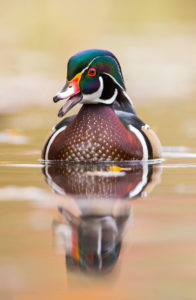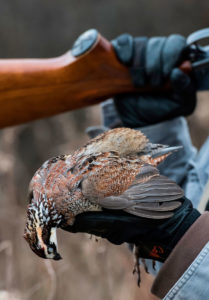
National Forests, smaller game lands are tops
Butner-Falls/Jordan
Biologist Chris Baranski of the N.C. Wildlife Resources Commission classified Butner-Falls of Neuse and Jordan Lake as one game land — 30 miles apart — because of nearly identical habitats and sizes.
Both offer deer, small-game and waterfowl hunting.
Jordan and Butner-Falls of the Neuse have topped North Carolina in deer harvest on moderate-sized game lands for several years, with hunters taking better than 500 per season.
Waterfowl success at each central lake is “hit or miss depending on weather,” he said. “Falls has seven planted-crop waterfowl impoundments (some require permits), while Jordan has seven impoundments (three planted-crop and four greentree impoundments).”
With seven, large managed fields totaling 200 acres, dove hunting draws sportsmen to Butner-Falls. Jordan’s 65½ acres at nine dove fields also excite wing-shooters, the best around Mason Point.
Because of hardwood ridges at both game lands “hunters shouldn’t have any problem finding squirrels,” Baranski said.
The northern end of Butner-Falls, with its managed fields, also attracts rabbit hunters.
Uwharrie N.F.
This national forest in Davidson, Montgomery and Randolph counties has multiple sections scattered across 51,849 acres. Part of the Uwharrie and Burkhead mountains, it features classic, Northern Piedmont habitat, including some steep hills covered by hardwood forests.
 “Deer heavily populate the area,” said biologist Chris Dawes of the Commission.
“Deer heavily populate the area,” said biologist Chris Dawes of the Commission.
Whitetails with trophy racks live in Uwharrie’s hills and hollows, but the region receives heavy hunting pressure from the Greensboro/Winston-Salem/High Point area, along with Charlotte.
Camping and ATV riding is allowed.
“If you’re after a big buck, you have to get away from the crowds and do your homework,” Dawes said.
Vast, mast-producing hardwood forests also suit wild turkeys and small game.
“There’s really good gray squirrel hunting,” he said.
Although Dawes noted “five or six” dove fields totaling 40 acres, the U.S. Forest Service allows Commission biologists to plant and manage just two fields of 3 and 4 acres.
Sandhills Game Lands
With 64,862 acres in tracts of variable sizes dotting Hoke, Moore, Richmond and Scotland counties, the Sandhills Game Lands boasts fine whitetail and small-game hunting.
“Hunters mostly don’t need permits for deer, but (hunts and seasons) follow local deer laws,” Dawes said.

Because Sandhills spreads across so many counties, hunters should check regulations for rules. The Field Trial Area is closed to all hunting Oct. 22-March 31, and has special dates for archery, muzzle-loader and regular gun seasons, and permits are required for either-sex gun seasons.
Hunters may use dogs to hunt deer with visible antlers in tracts in Richmond and Scotland counties.
“Still-hunting actually is tough because most of the habitat is open, long-leaf pine forests and wire grass, so deer hang out in drainages and stay hidden during daylight hours,” Dawes said
Sandhills is open for hunting on Mondays, Wednesdays and Saturdays.
Non-permit, season-long dove hunts are allowed on 21 fields covering 145 total acres, except the Field Trials Area, where hunting is banned from the third Sunday in September to season’s end.
“Fox squirrels draw a good number of folks,” Dawes said. “Gray squirrels are at outlying stands of mast-producing hardwoods.”
Rabbit hunters get fair results at dove-field edges, successional-plant areas, plum and briar thickets.



